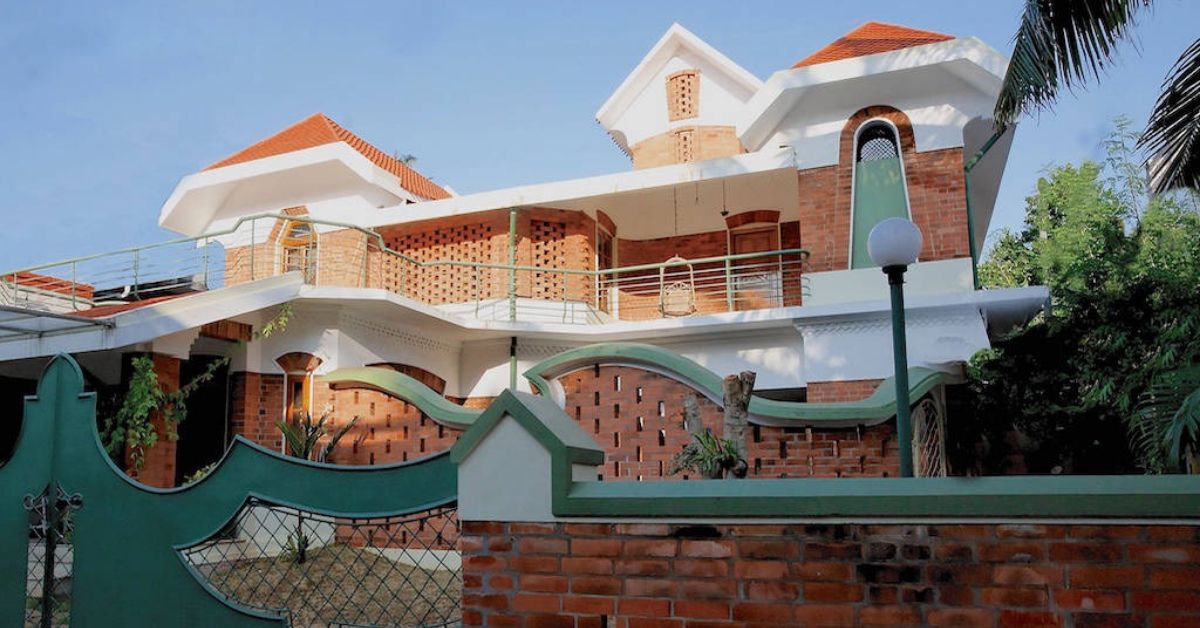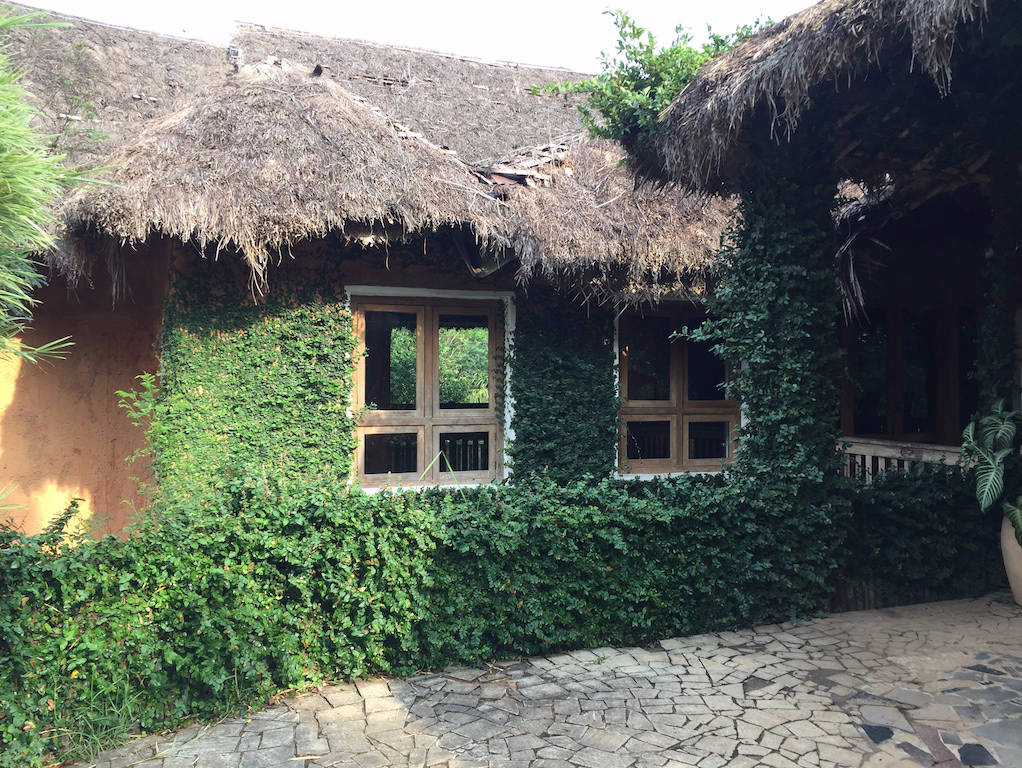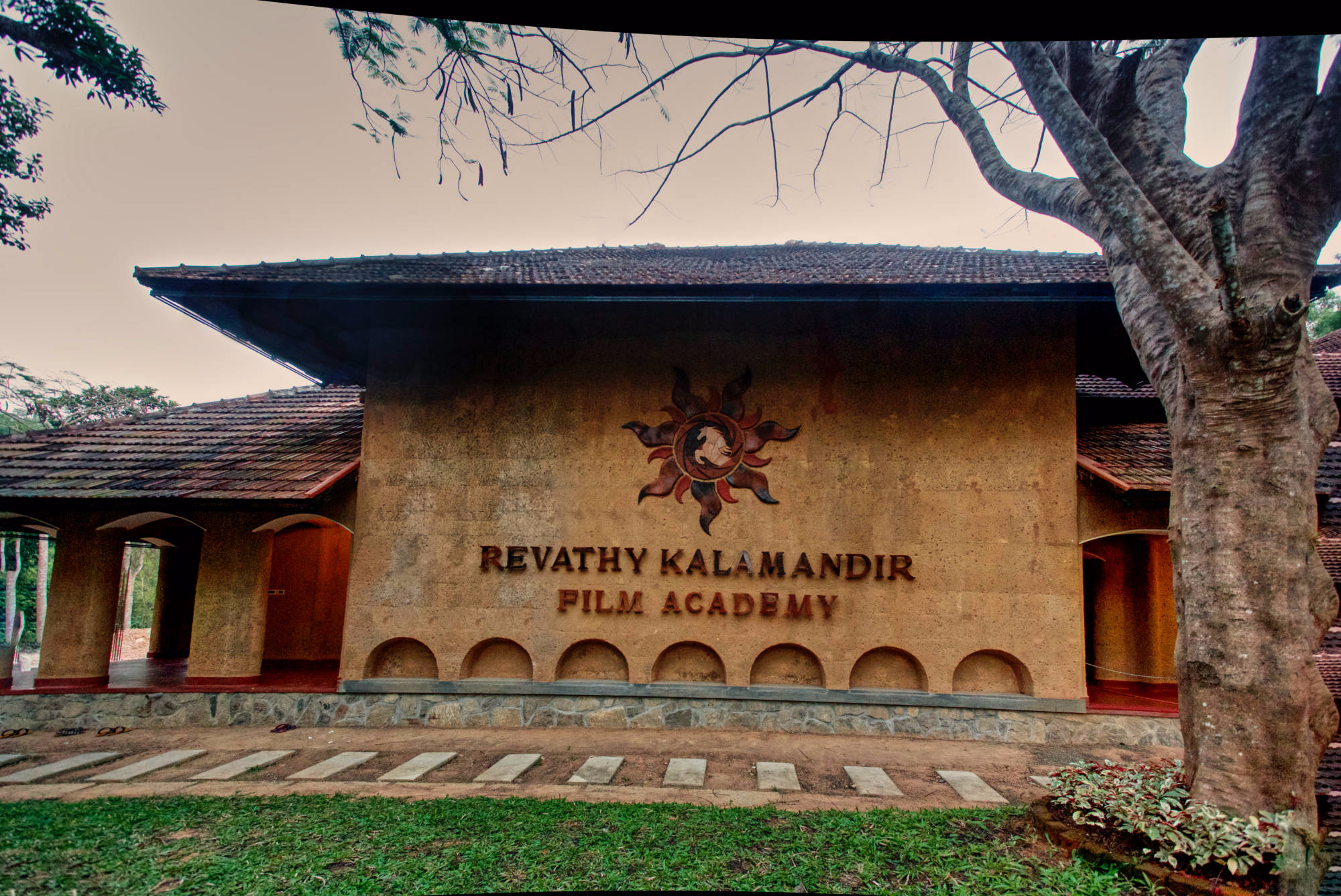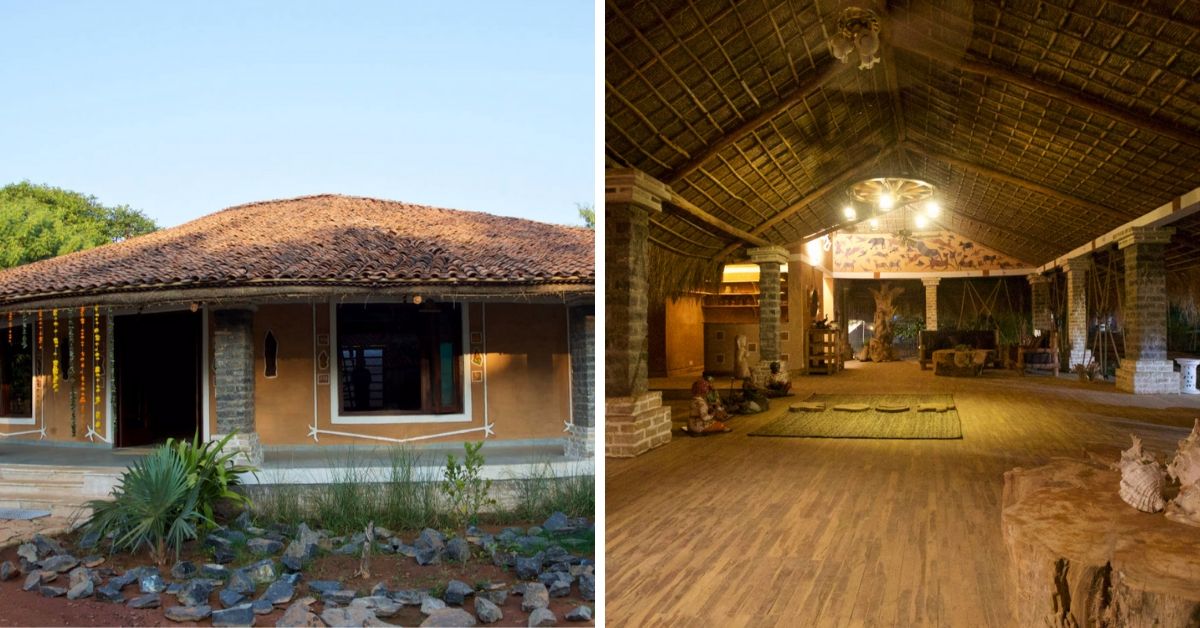Building Low-Cost Green Houses Since 1996: Architect Brings Back Mud Homes In India!
Made by incorporating straw, bamboo and timber, these houses are cheaper, recyclable and pollution-free. As for the life span, they can last for a thousand years!

An ideal house in the village should be built using material that is found within a five-mile radius of the house.”
This belief of Mahatma Gandhi left a lasting impression on young Laurie Baker. The British-born Indian architect was a pioneer in constructing sustainable homes using mud and other local resources.
Make your house greener and cleaner. Check out eco-friendly home decor on The Better India Shop, here.
Baker, who is fondly referred to as ‘Gandhi of Architecture’, went on to inspire architects to opt for green materials in the Pre and Post Independence era. It is no wonder that India has 65 million mud houses of the total 118 million, as per Down To Earth magazine.
As India opened its doors to the outside world, the construction industry flourished, accommodating other modern construction materials like cement, glass and marble. Houses in urban areas underwent horizontal and vertical expansion as traditional methods replaced the machine-intensive one. People’s definition of a house changed, as it turned into an asset with a long-term investment.
Spending large amounts of money for a mud house was not an appealing prospect anymore, causing a rise in the demand for modern construction materials. Mud houses soon came to be associated with rural areas and economic backwardness.

The rise-fall-rise in the importance given to mud houses across the country continues as environmentally-conscious citizens gradually chose cost-effective and energy-saving eco-friendly building materials for their dream houses.
We no longer have to persuade people, and the benefits of the traditional houses are self-explanatory, says renowned architect Eugene Pandala, in a conversation with The Better India.
He tells me about a mud house he constructed for an IAS officer in Kerala. It was only after the unique house called ‘Bodhi’ was published in several publications, that people started noticing the significance of an eco-friendly abode.

From exotic resorts, film academies, hospitals, to heritage sites like Pazhassi Raja Memorial, Pandala has been constructing eco-friendly structures across India since 1996. Popularising the country’s rich tradition of mud houses, the award-winning architect can effortlessly incorporate any local resources like straw, bamboo, timber, steel, in his designs.
Born and raised on the Malabar coast, in Kerala’s Kollam, Pandala’s fascination for sustainable homes dates back to his childhood.
I grew up in the lap of sea, surrounded by lakes, mountains, vast green fields, and backwaters, with lime-plastered walls in my mud house. My dad was an artist and he would often clay in stock. So I would use clay to make miniature houses. Naturally, I wanted to be close to nature for life, says the 65-year-old.
His wish took a concrete shape after he chose architecture as his field of study. He completed Masters from the School of Planning and Architecture, New Delhi, and then went to do a fellowship at UK’s Heritage Conservation at the University of York and the Fort Brockhurst English Heritage Training Centre.
Pandala also credits his love for mud to eminent Egyptian architect, Hassan Fathy, who wrote the book Architecture for the Poor: An Experiment in Rural Egypt. The techniques of construction in this book inspired him and introduced him to the concept of having a roof over your head without disturbing nature.
On A Green Spree

Studying the biodiversity of the site is the first and most crucial part of Pandala’s process.
There should be a minimal intervention in nature from our side. Our policy is to build the house without disturbing the trees and water bodies. The direction of the wind and natural light are studied to reduce the use of ACs, fans and heaters in the house.
He uses the oldest construction cob technique. Cob is an amalgamation of soil, clay and straw, blended with water.
Pandala uses more than 20 per cent clay to make the house stronger. The blend can be made by machines or manually with a digger.

Besides the cob method, he also uses the rammed earth technique to construct foundations, floors, and walls, where natural raw materials such as earth, chalk, lime, or grave are rammed together.
Since the rammed earth and cob walls are constructed on-site, manufacture and transport costs are eliminated, leading to reduced carbon footprints.
The thick walls of the cob house also provide thermal regulation, meaning that they are cool during summer and absorb heat in winter.

As the walls are made of the earth, they are recyclable and pollution-free. And they can last for thousands of years if the roofs are built to protect the walls from the rains! “”When constructing the roof, we extend it beyond the house by two feet on either side. By doing this, we make sure that rainwater does not touch the structure.”
Are mud houses less durable than conventional houses? Do they require more maintenance? Pandala answers, “While it is true that mud houses may cause some problems during rains, these issues can be addressed during the construction. Stabilisers like wheat husk, straw, lime, and cow dung can be used to prevent any damage.”
As for the cost, if 1 sq ft in a conventional house would cost Rs 1,000, while the same area in an eco-friendly one will be priced at Rs 600, Pandala points out.

For all his work, Eugene Pandala has received several prestigious awards, including the Laurie Baker Award from Lalith Kala Academy. What started as a mere fascination for mud structures has now turned into a conscious mission to reduce carbon footprints from residential construction.
For instance, Tendu Leaf Jungle Resort in Madhya Pradesh was constructed from waste materials. Discarded timber and steel were recycled and reused to make the beautiful cottages of the resort that, according to the architect, are ‘affordable sustainable buildings’.

Building eco-friendly houses is not a want anymore, it is a need. Around 40 per cent of the greenhouse gases are released by construction activities, considering the huge volumes of energy required to build and sustain the houses. Lifestyle modification is needed to prevent water crises and floods, he says.
You can get in touch with Eugene Pandala here.
All images are sourced from here.
Also Read: Made of Mud & Bamboocrete: Architect’s 100% Recyclable House Beats the Heat!
(Edited by Shruti Singhal)
Like this story? Or have something to share?
Write to us: [email protected]
Connect with us on Facebook and Twitter.
If you found our stories insightful, informative, or even just enjoyable, we invite you to consider making a voluntary payment to support the work we do at The Better India. Your contribution helps us continue producing quality content that educates, inspires, and drives positive change.
Choose one of the payment options below for your contribution-
By paying for the stories you value, you directly contribute to sustaining our efforts focused on making a difference in the world. Together, let’s ensure that impactful stories continue to be told and shared, enriching lives and communities alike.
Thank you for your support. Here are some frequently asked questions you might find helpful to know why you are contributing?


This story made me
-
97
-
121
-
89
-
167











